Numerical Simulation Study of Aerodynamic Noise in High-Rise Buildings
Abstract
:1. Introduction
2. Sound Pressure Field Radiation Theory and Numerical Simulation Theory of Aerodynamic Noise
2.1. Numerical Simulation of Flow Field
2.2. Sound Field Radiation Theory
3. Model of the Study
3.1. Model
3.2. Meshing
3.3. Boundary Condition Setting
3.4. Noise Monitoring Point Arrangement
3.5. Acoustic Noise Simulation Parameter Setting
4. Analysis of the Calculated Sound Pressure Intensity Distribution Cloud Map
4.1. Analysis of Simulation Results of Sound Pressure Intensity on Building Surfaces
4.2. Comparison Results between Simulated and Experimental Noise Source Localization Cloud Maps under Each Working Condition
5. Analysis of Sound Pressure Level Spectrum in Acoustic Wind Tunnel Experiment
5.1. Time Domain Analysis
5.2. Frequency Domain Analysis
6. Comparison of Sound Pressure Level Spectrum between Numerical Simulation and Wind Tunnel Experiment
7. Conclusions
- (1)
- The numerical simulation of the aerodynamic noise of the high-rise building is in good agreement with the localization results for noise sources in an acoustic wind tunnel, and thus, a noise source on the surface of a high-rise building can be located by numerical simulation.
- (2)
- Because of limited experimental conditions, wind tunnel experimental results in the low-frequency band are greatly influenced by background noise, resulting in the deviation of sound pressure level spectrum from the simulated results in the low-frequency band.
- (3)
- The numerical simulation results are in good agreement with the acoustic wind tunnel experimental results in the middle- and high-frequency bands, which are more significantly influenced by the aerodynamic noise radiated from the surface of the building model.
- (4)
- The numerical simulation method can be used to calculate aerodynamic noise intensity at various points on the surfaces of high-rise buildings and reasonably predict and evaluate the influence of wind-induced aerodynamic noise on the environment.
- (5)
- The numerical simulation method can reproduce the results of acoustic wind tunnel experiments with high accuracy.
Author Contributions
Funding
Institutional Review Board Statement
Informed Consent Statement
Data Availability Statement
Conflicts of Interest
References
- Tam, C.K.W. Discrete tones of isolated airfoils. J. Acoust. Soc. Am. 1974, 55, 1173–1177. [Google Scholar] [CrossRef]
- Nakano, T.; Kim, H.J.; Lee, S.; Fujisawa, N.; Takagi, Y. A study on discrete frequency noise from a symmetrical airfoil in a uniform flow. In Proceedings of the 5th JSME-KSME Fluids Eng conference, Nagoya, Japan, 17–21 November 2002. [Google Scholar]
- Chanthanasaro, T.; Boonyasiriwat, C. Numerical Study on Characteristics of Sound and Wake Generated by Flow past Triangular Cylinder at Various Incident Angles. J. Phys. Conf. Ser. 2021, 1719, 12034. [Google Scholar] [CrossRef]
- Wang, M.; Moin, P. Computer of trailing-edge flow and noise using large-eddy simulation. AIAA J. 2015, 38, 2201–2209. [Google Scholar] [CrossRef]
- Mo, J.O.; Lee, Y.H. Numerical simulation for prediction of aerodynamic noise characteristics on a HAWT of NREL phase VI. J. Mech. Sci. Technol. 2011, 25, 1341–1349. [Google Scholar] [CrossRef]
- Angelino, M.; Xia, H.; Page, G.J. Influence of grid resolution on the spectral characteristics of noise radiated from turbulent jets: Sound pressure fields and their decomposition—ScienceDirect. Comput. Fluids 2020, 196, 104343. [Google Scholar] [CrossRef]
- Liu, B.; Guo, J.S.; Zhang, X.L. Research on outdoor aerodynamic noise of super high-rise buildings based on CFD technology. Archit. Tech. 2011, 3, 164–166. [Google Scholar]
- Au, T.; Zhang, Y.H.; Xu, W.; Tan, J. Pneumatic noise simulation and its application in Hengqin Development Building. In Proceedings of the 2014 Annual Meeting of the Building Structure Branch of the Architectural Society of China and the Twenty-third National Academic Exchange Conference on Tall Building Structures, Ed. of Building Structures, Guangzhou, China, 19 November 2014; pp. 1–4. Available online: https://d.wanfangdata.com.cn/conference/8848250 (accessed on 14 September 2022).
- Zhu, Z.; Deng, Y. Large Eddy Simulation of Aerodynamic Noise Field in Super Tall Buildings. J. Southwest Jiaotong Univ. 2019, 54, 748–756. [Google Scholar]
- Aihara, A.; Bolin, K.; Goude, A.; Bernhoff, H. Aeroacoustic noise prediction of a vertical axis wind turbine using large eddy simulation. Int. J. Aeroacoust. 2021, 20, 959–978. [Google Scholar] [CrossRef]
- Hamiga, W.M.; Ciesielka, W.B. Numerical Analysis of Aeroacoustic Phenomena Generated by Heterogeneous Column of Vehicles. Energies 2022, 15, 4669. [Google Scholar] [CrossRef]
- Karthik, K.; Vishnu, M.; Vengadesan, S.; Bhattacharyya, S.K. Optimization of bluff bodies for aerodynamic drag and sound reduction using CFD analysis. J. Wind Eng. Ind. Aerodyn. 2018, 174, 133–140. [Google Scholar] [CrossRef]
- Chen, N.S.; Liu, H.R.; Liu, Q.; Zhao, X.Y.; Wang, Y.G. Effects and mechanisms of LES and DDES method on airfoil self-noise prediction at low to moderate Reynolds numbers. AIP Adv. 2021, 11, 025232. [Google Scholar] [CrossRef]
- Smagorinsky, J.S.; Smagorinsky, J. General Circulation Experiments with the Primitive Equations. Mon. Weather Rev. 1963, 91, 99–164. [Google Scholar] [CrossRef]
- Lighthill, M.J. On sound generated aerodynamically Ⅱ. Turbulence as a source of sound. Proc. R. Soc. Lond. 1954, 222, 1–32. [Google Scholar]
- Illiams, J.E.F.; Hawkings, D.L. Sound generation by turbulence and surfaces in arbitrary motion. Philosophical Transactions of the Royal Society of London Series A. Math. Phys. Sci. 1969, 264, 321–342. [Google Scholar]
- Blocken, B.J.E. Computational Fluid Dynamics for urban physics: Importance, scales, possibilities, limitations and ten tips and tricks towards accurate and reliable simulations. Build. Environ. 2015, 91, 219–245. [Google Scholar] [CrossRef]
- Hunt, A. Wind-tunnel measurements of surface pressures on cubic building models at several scales. J. Wind Eng. Ind. Aerodyn. 1982, 10, 137–163. [Google Scholar] [CrossRef]
- Liu, J.; Niu, J.C.F.D. simulation of the wind environment around an isolated high-rise building: An evaluation of SRANS, LES and DES models. Build. Environ. 2016, 96, 91–106. [Google Scholar] [CrossRef]
- Dougherty, R.P. Beamforming in acoustic testing. In Aeroacoustic Measurements; Springer: Berlin/Heidelberg, Germany, 2002; pp. 62–97. [Google Scholar]
- Underbrink, J.R. Aeroacoustic phased array testing in low speed wind tunnels. In Aeroacoustic Measurements; Springer: Berlin/Heidelberg, Germany, 2002; pp. 98–217. [Google Scholar]
- Liu, Y.; Quayle, A.R.; Dowling, A.P.; Sijtsma, P. Beamforming correction for dipole measurement using two-dimensional microphone arrays. J. Acoust. Soc. Am. 2008, 124, 182–191. [Google Scholar] [CrossRef]
- Soderman, P.T.; Noble, S.C. Directional Microphone Array for Acoustic Studies of Wind Tunnel Models. J. Aircr. 1975, 12, 168–173. [Google Scholar] [CrossRef]
- Bao, H.; Yang, M.; Ma, W. Rotating sound source localization error caused by microphone array installation deviation. J. Aerosp. Power 2019, 34, 1708–1716. [Google Scholar]
- Brooks, T.; Humphreys, W. Effect of Directional Array Size On The Measurement of Airframe Noise Components. AIAA Pap. 1999, 99–1958. [Google Scholar] [CrossRef]
- Gu, G.; Zhu, B. Aeroacoustic wind tunnel background noise testing and spectrum analysis. Noise Vib. Control. 2011, 31, 156–158+162. [Google Scholar]
- Howell, G.P.; Bradley, A.J. De-dopplerization and acoustic imaging of aircraft flyover Noise measurement. J. Sound Vib. 1986, 105, 151–167. [Google Scholar] [CrossRef]
- Brooks, T.F.; Marcolini, M.A.; Pope, D.S. A directional array approacch for the measurement of rotor noise source distributions with controlled spatial resolution. J. Sound Vib. 1987, 112, 192–197. [Google Scholar] [CrossRef]
- Gramann, R.A.; Mocio, J.W. Aero-acoustic measurements in wind tunnels using conventional adaptive beamforming methods. AIAA Pap. 1993, 93–4341. [Google Scholar] [CrossRef]
- Pei, Y.; Guo, M. The basic principle and application of sliding average method. J. Gun Launch Control 2001, 1, 21–23. [Google Scholar]
- Maruta, Y.; Minorikawa, G. Background Noise in Measuring Section of Low-Noise Acoustic Wind Tunnels: 1st Report, Analysis of Background Noise Sources in Measuring Section Yoshiyuki Maruta, Gaku Minorikawa. Trans. Jpn. Soc. Mech. Eng. Ser. B 1995, 61, 3741–3748. [Google Scholar] [CrossRef] [Green Version]
- Duell, E.; Yen, J.; Walter, J.; Arnette, S. Boundary layer noise in aeroacoustic wind tunnels. In Proceedings of the 42nd AIAA Aerospace Sciences Conference, Reno, NV, USA, 5–8 January 2004; p. 1028. [Google Scholar]
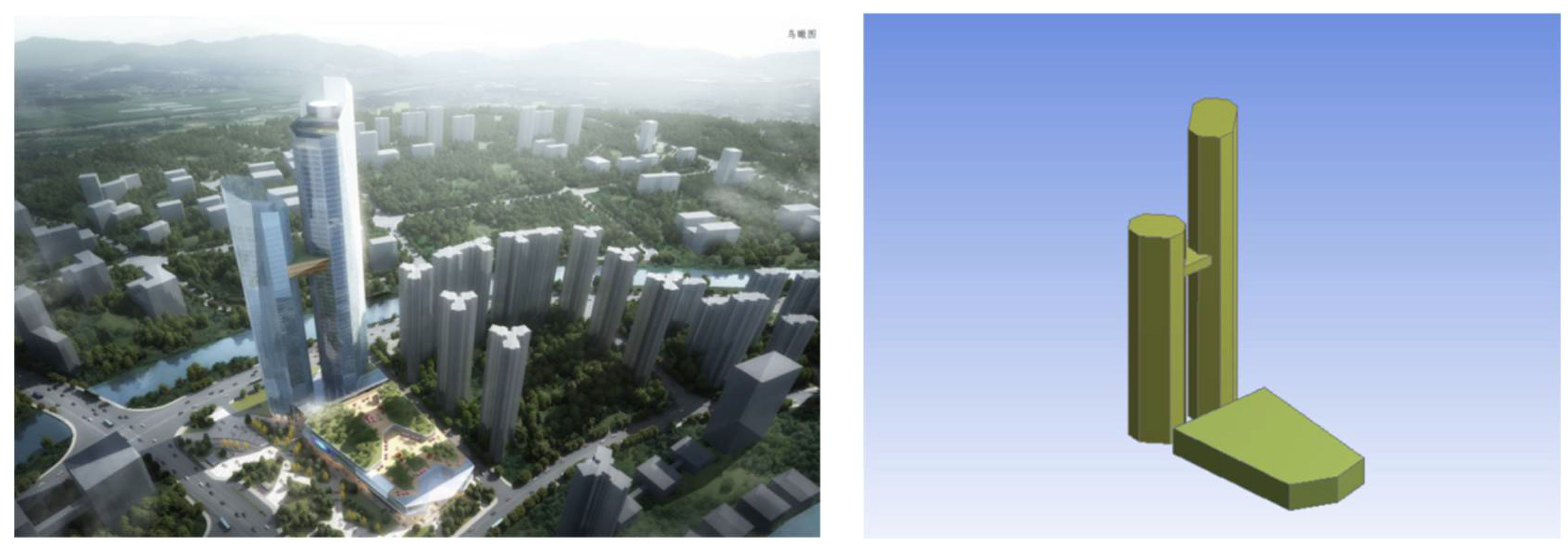



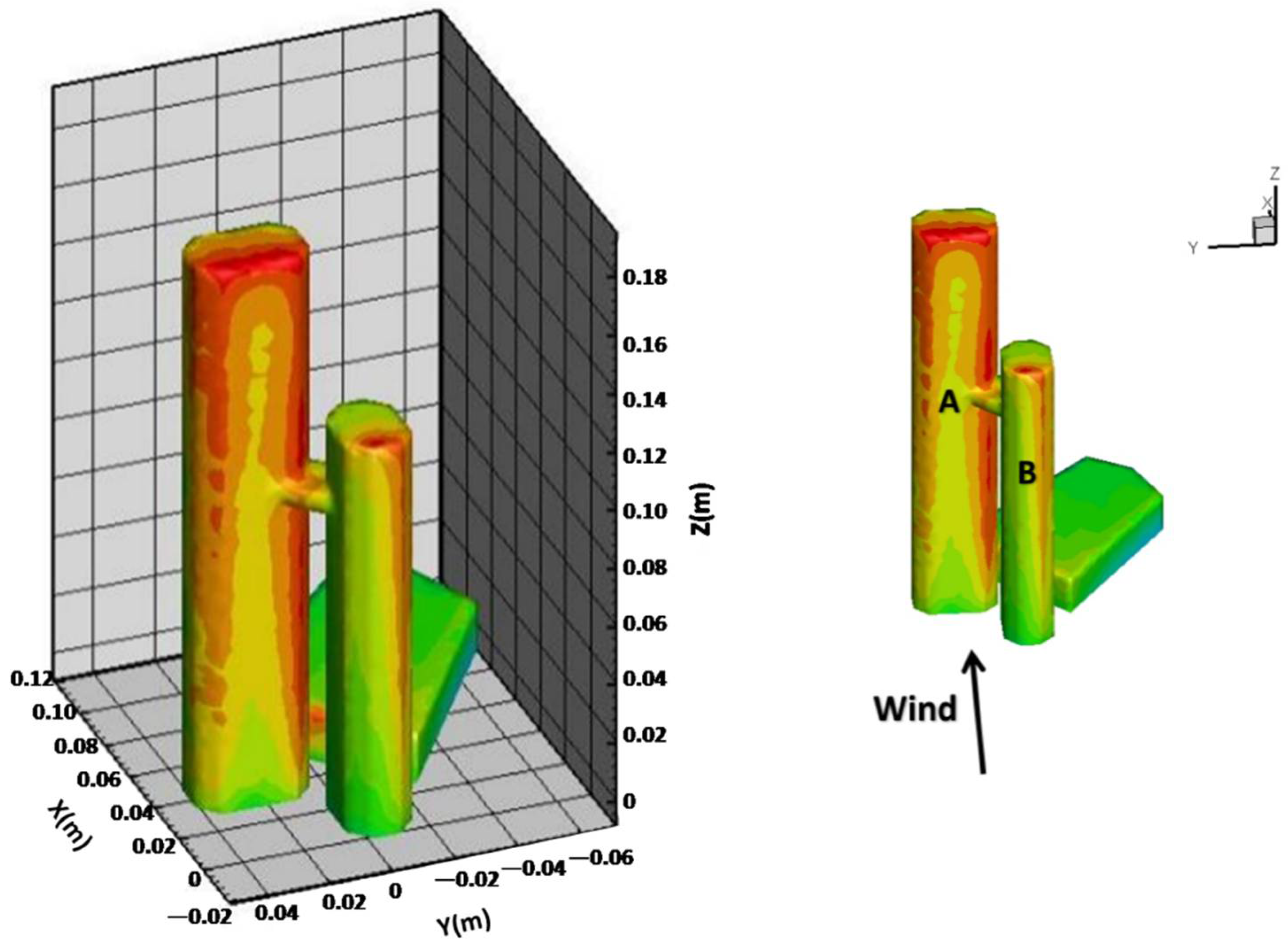

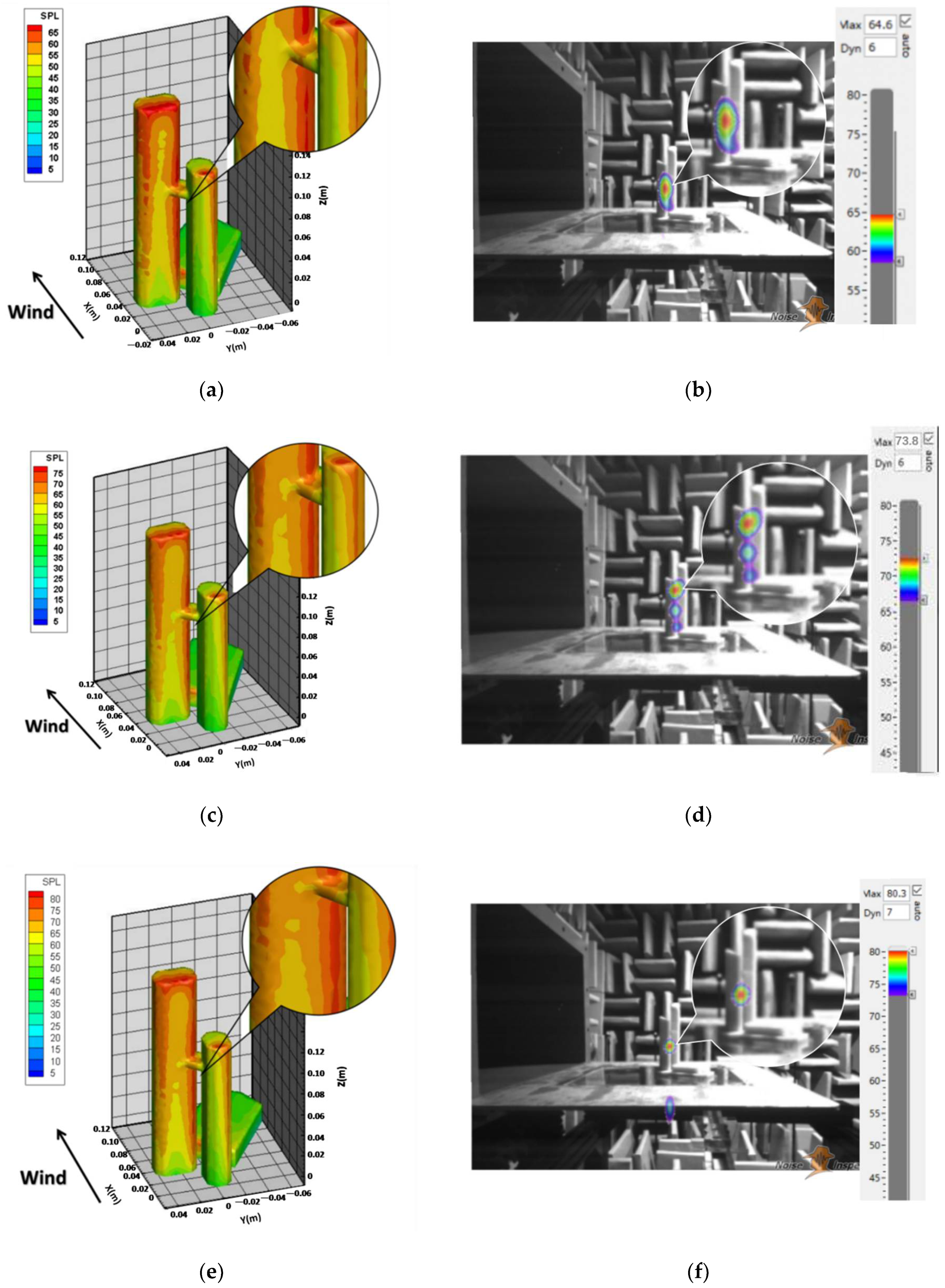
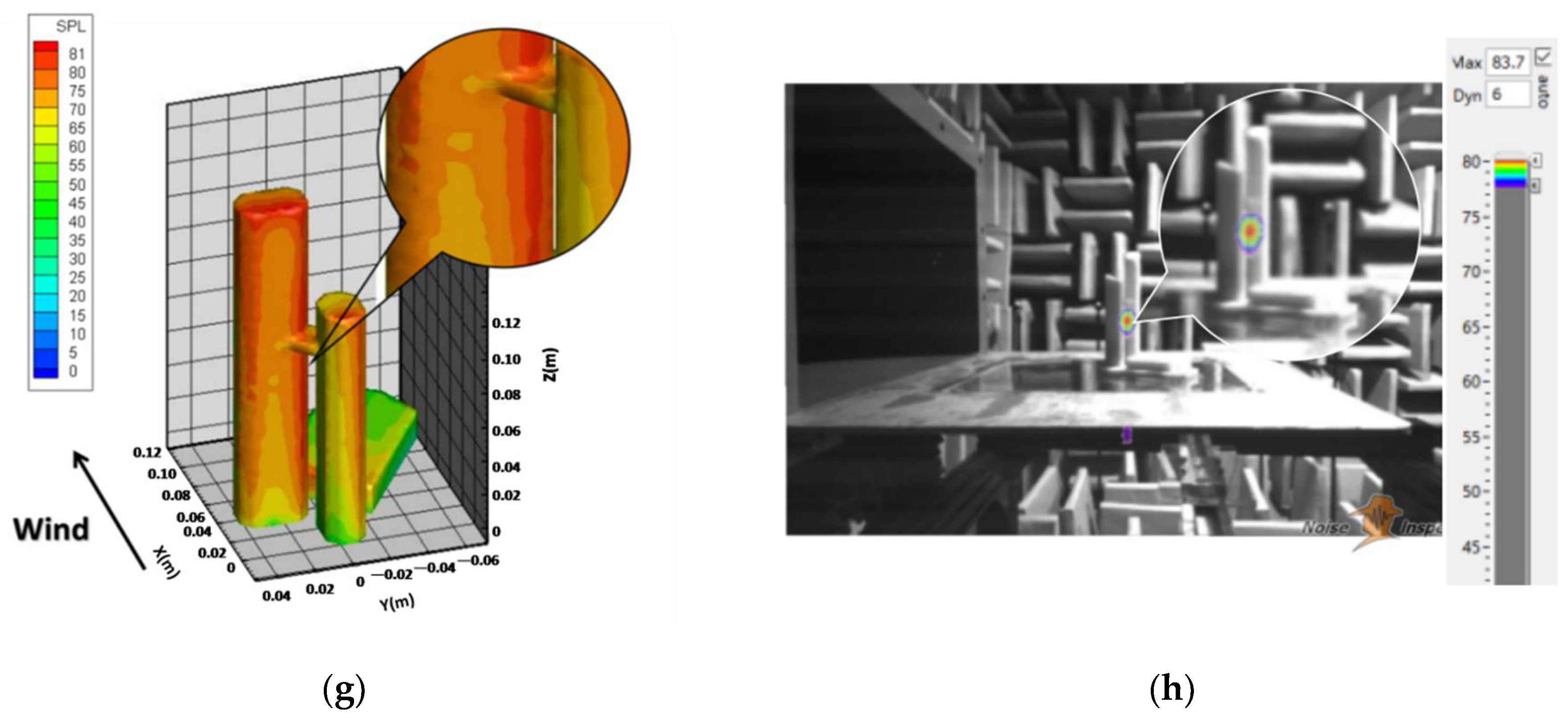
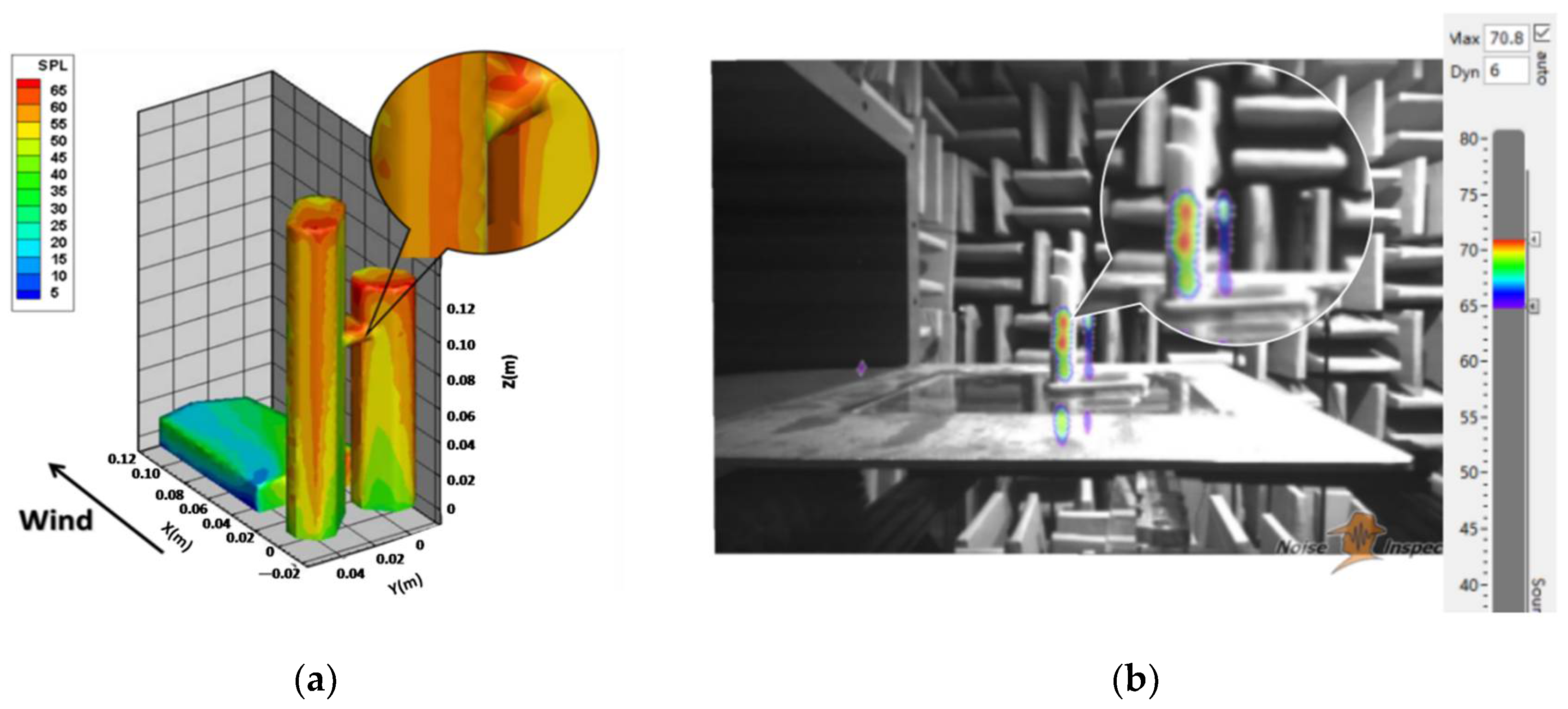
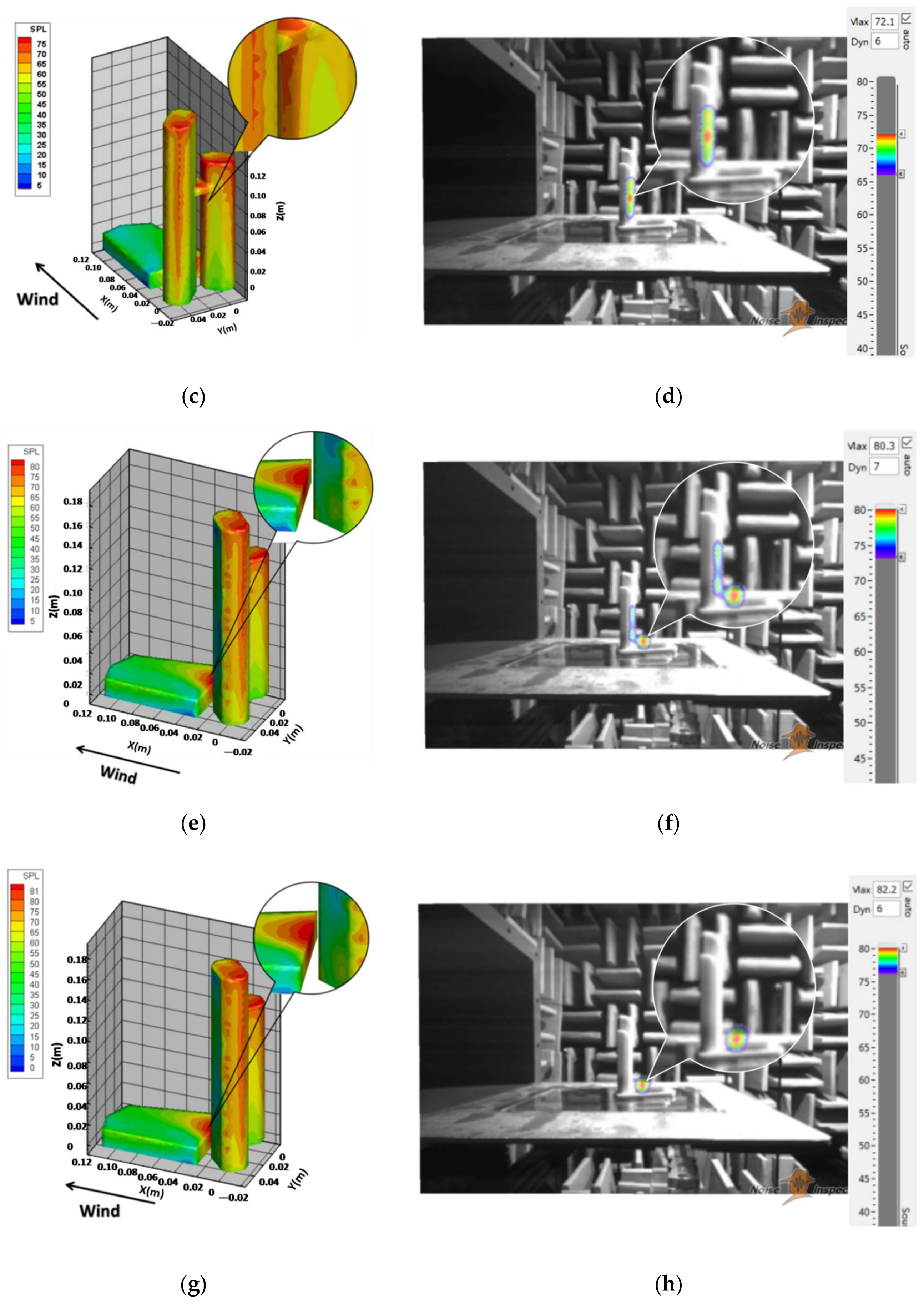

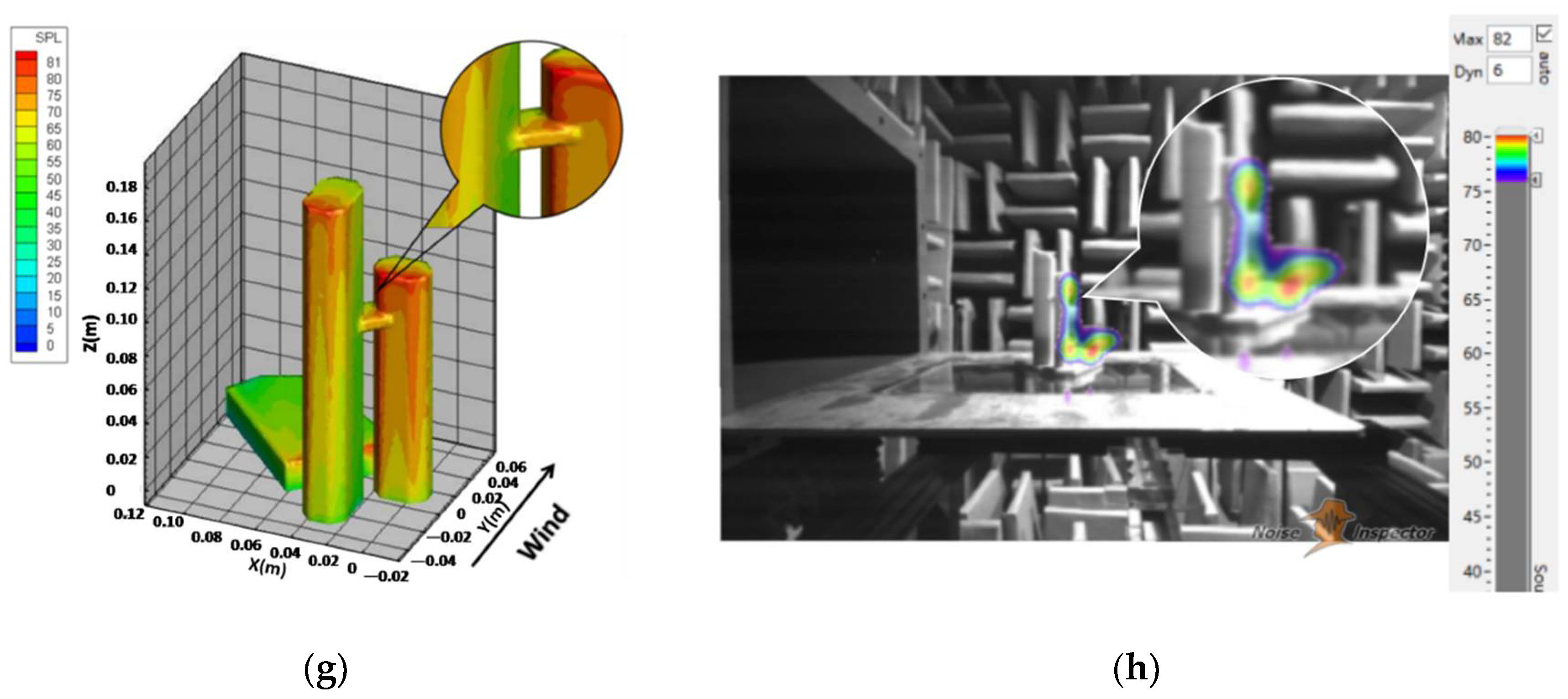
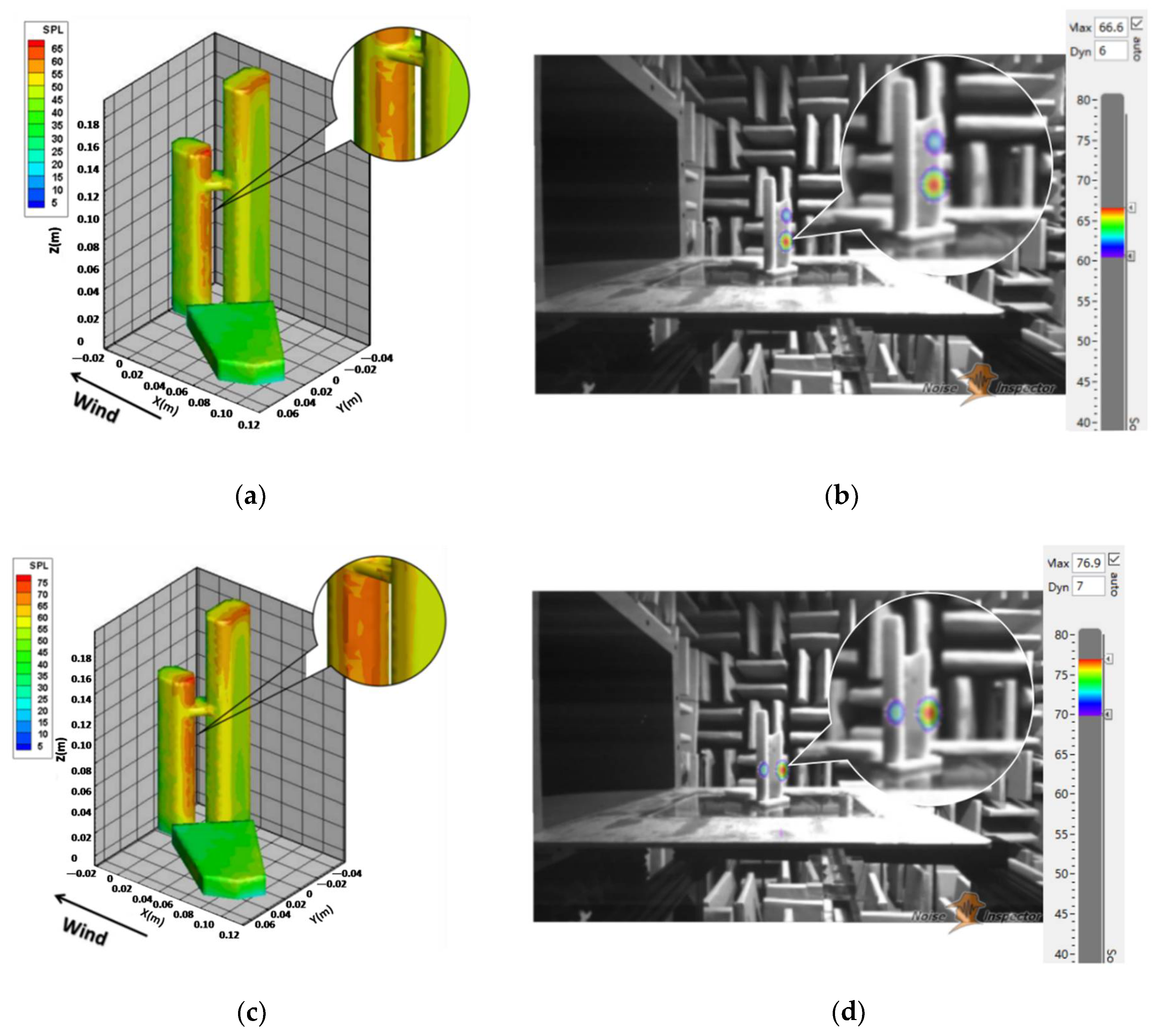
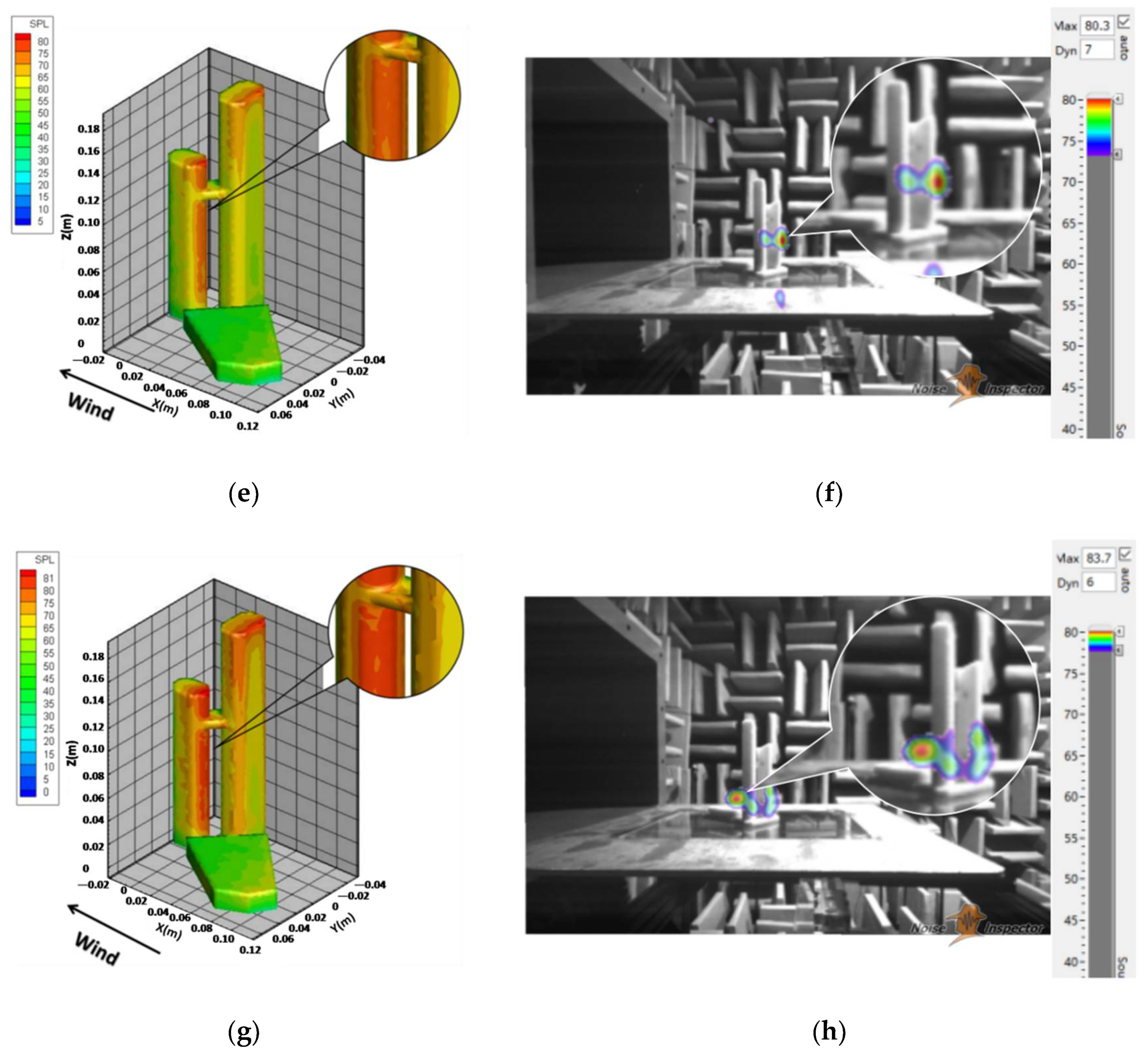
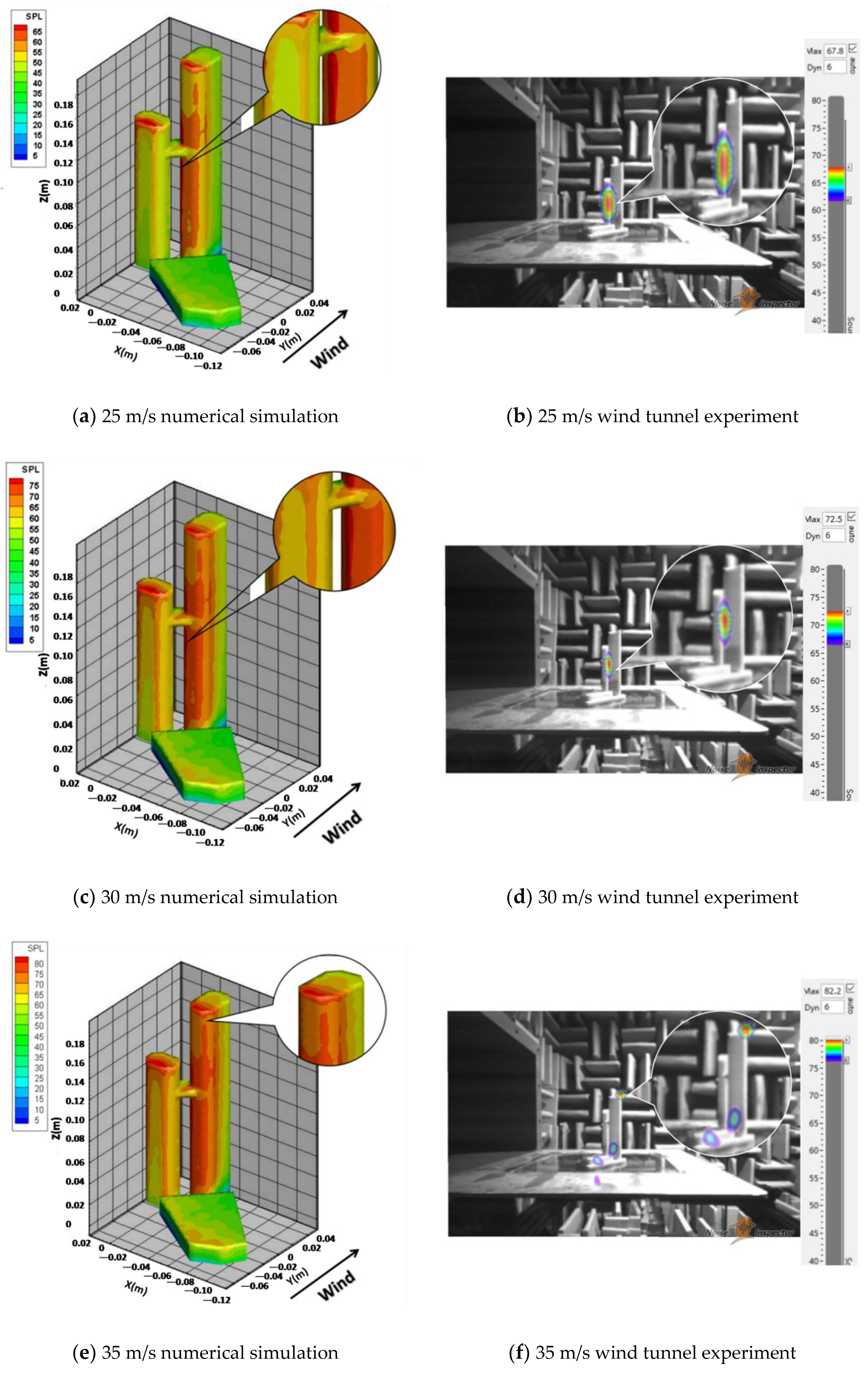
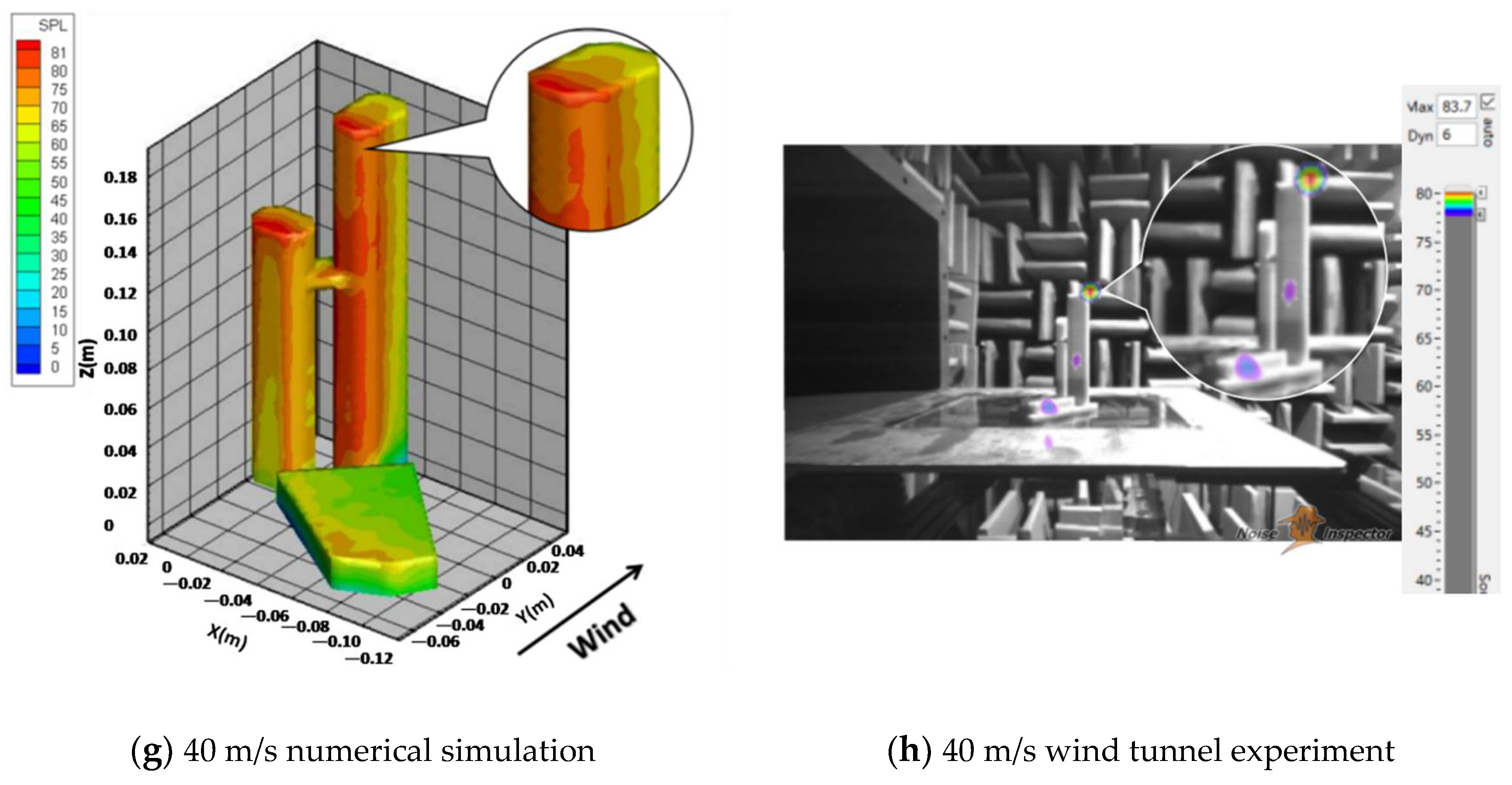
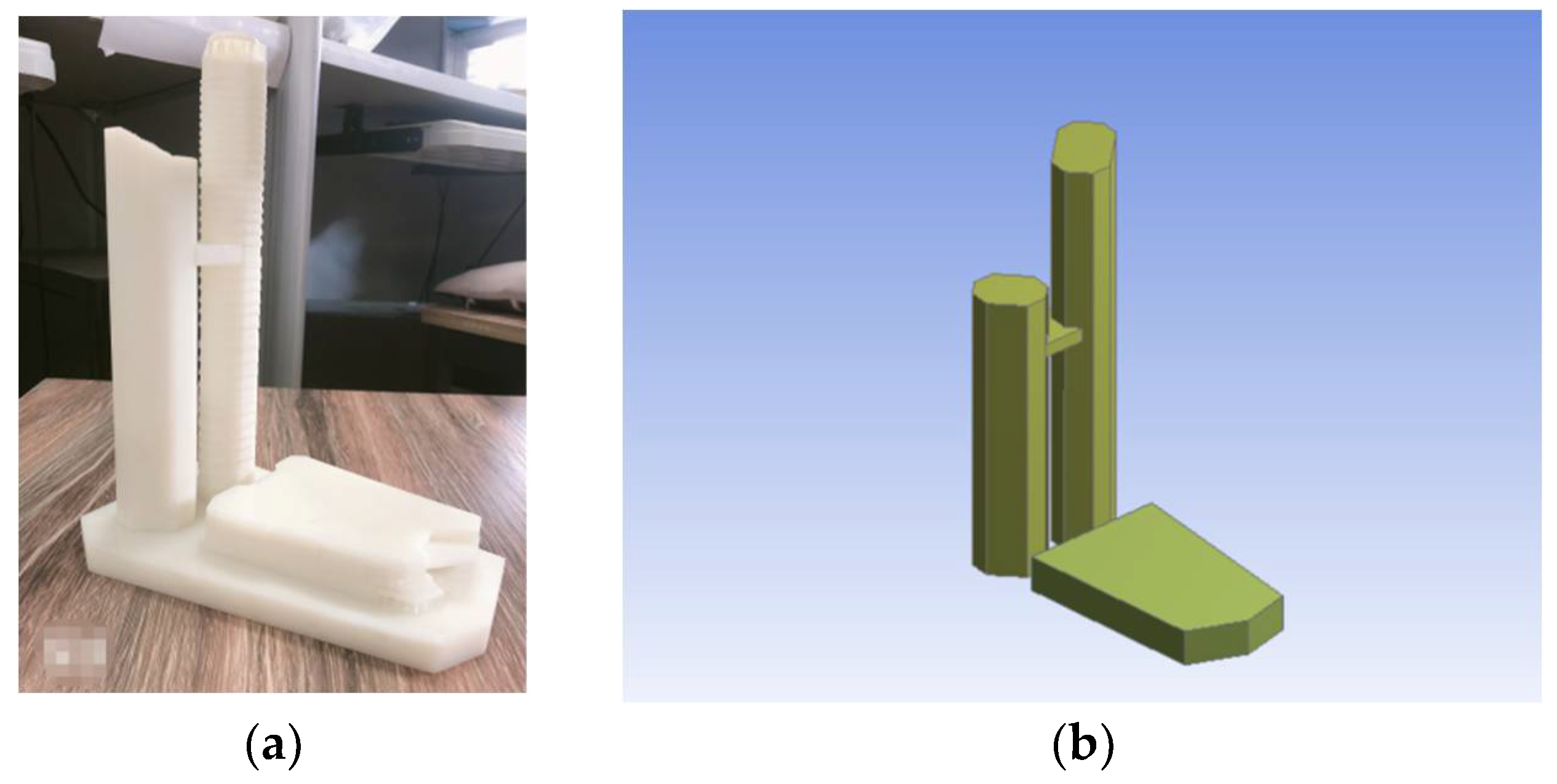





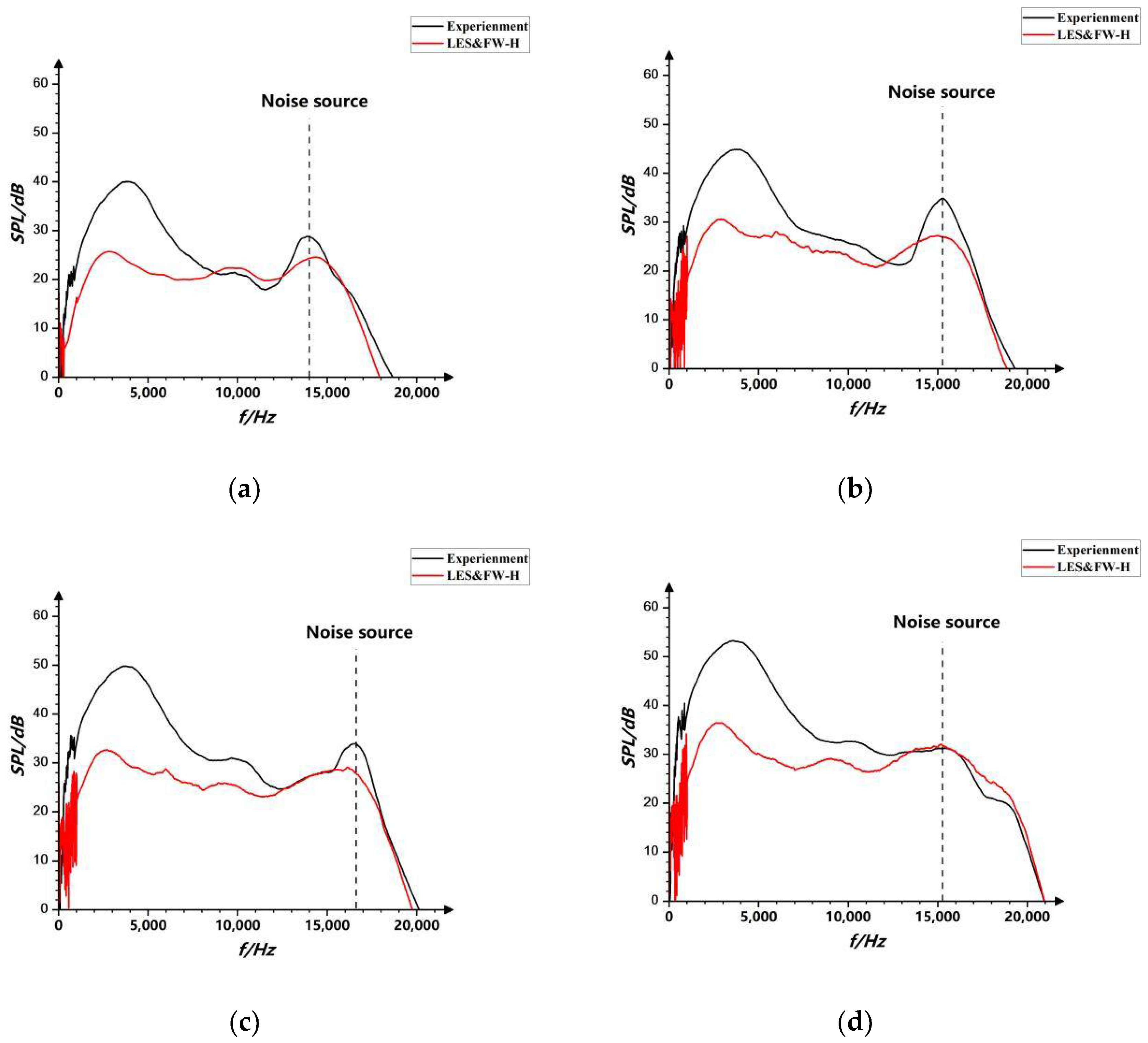
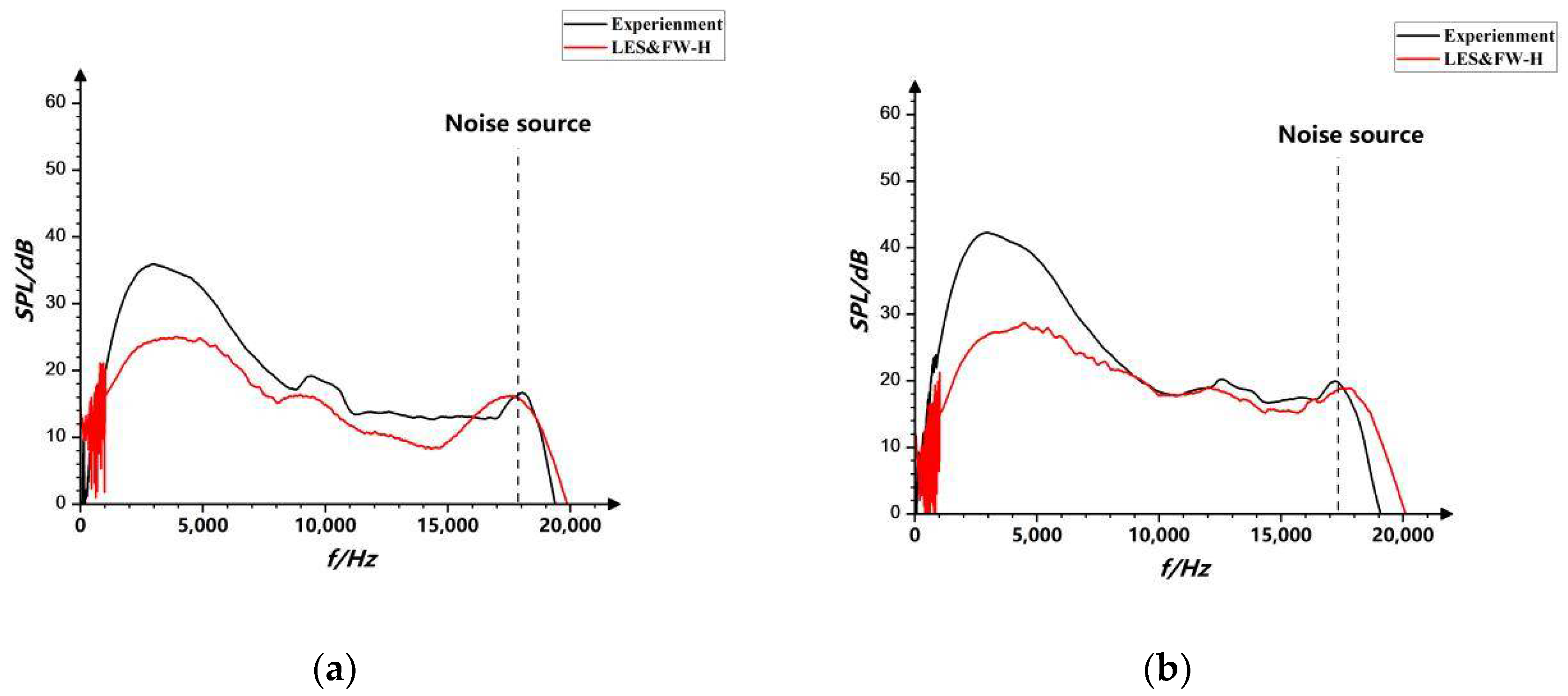

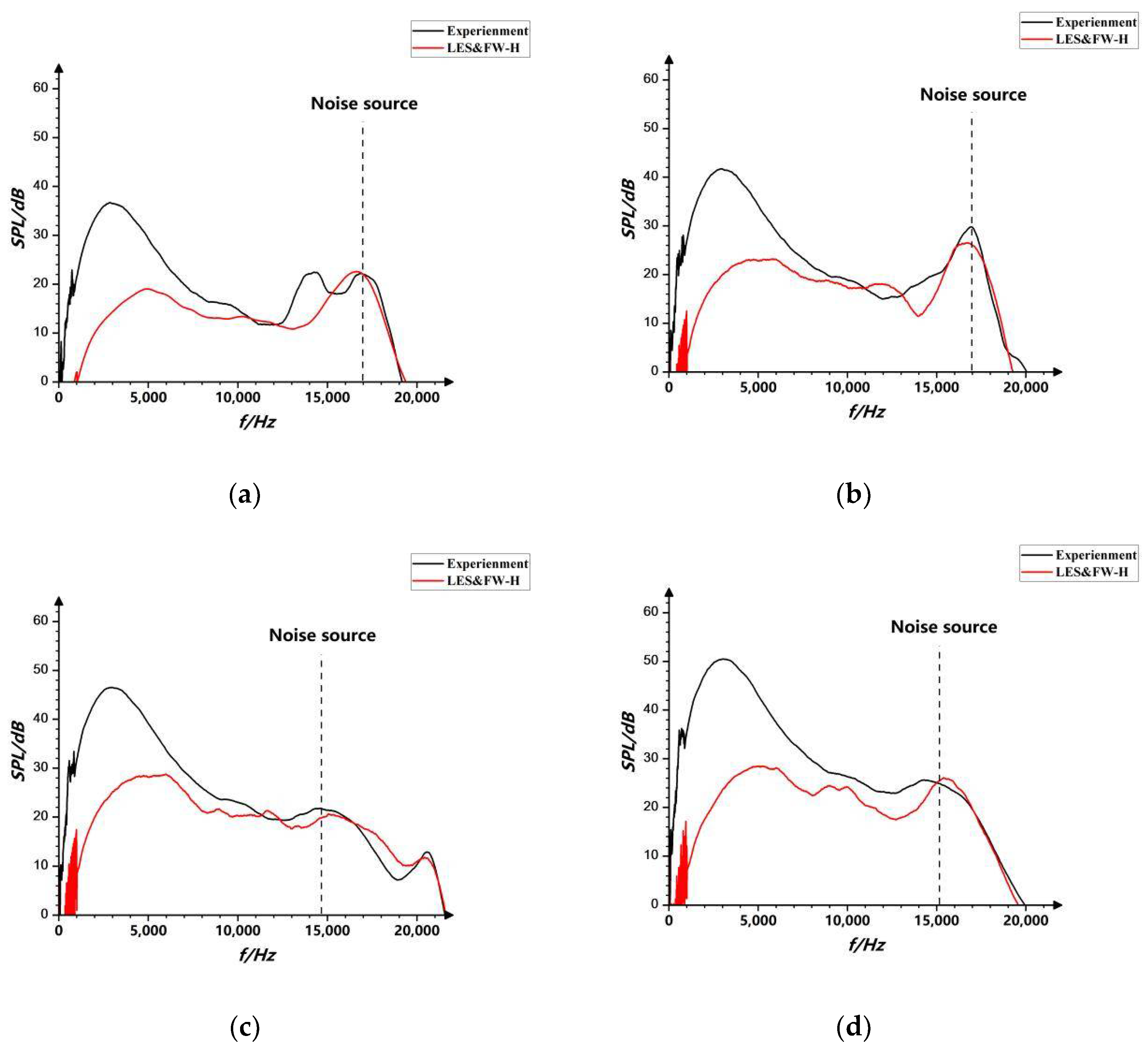
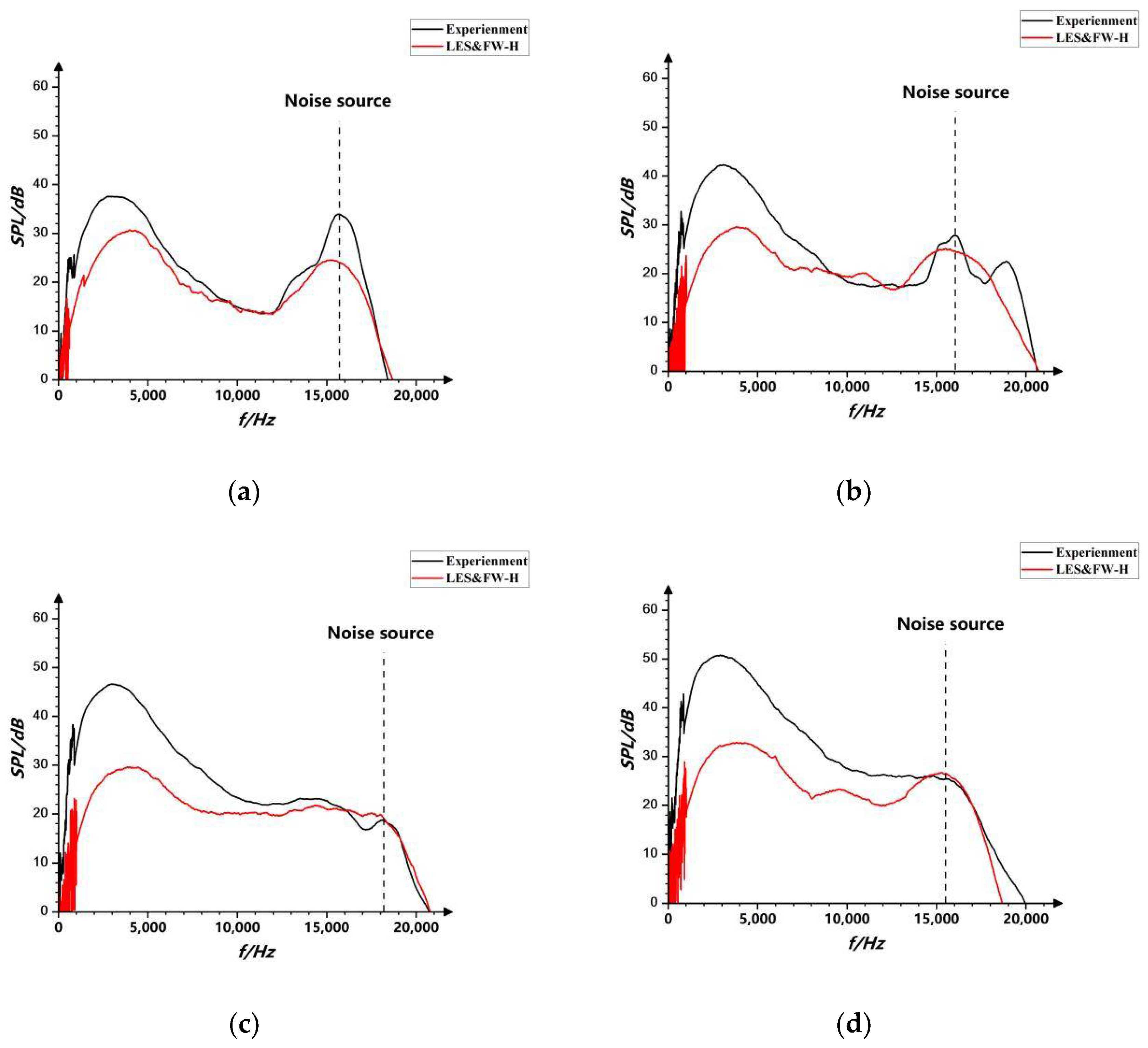
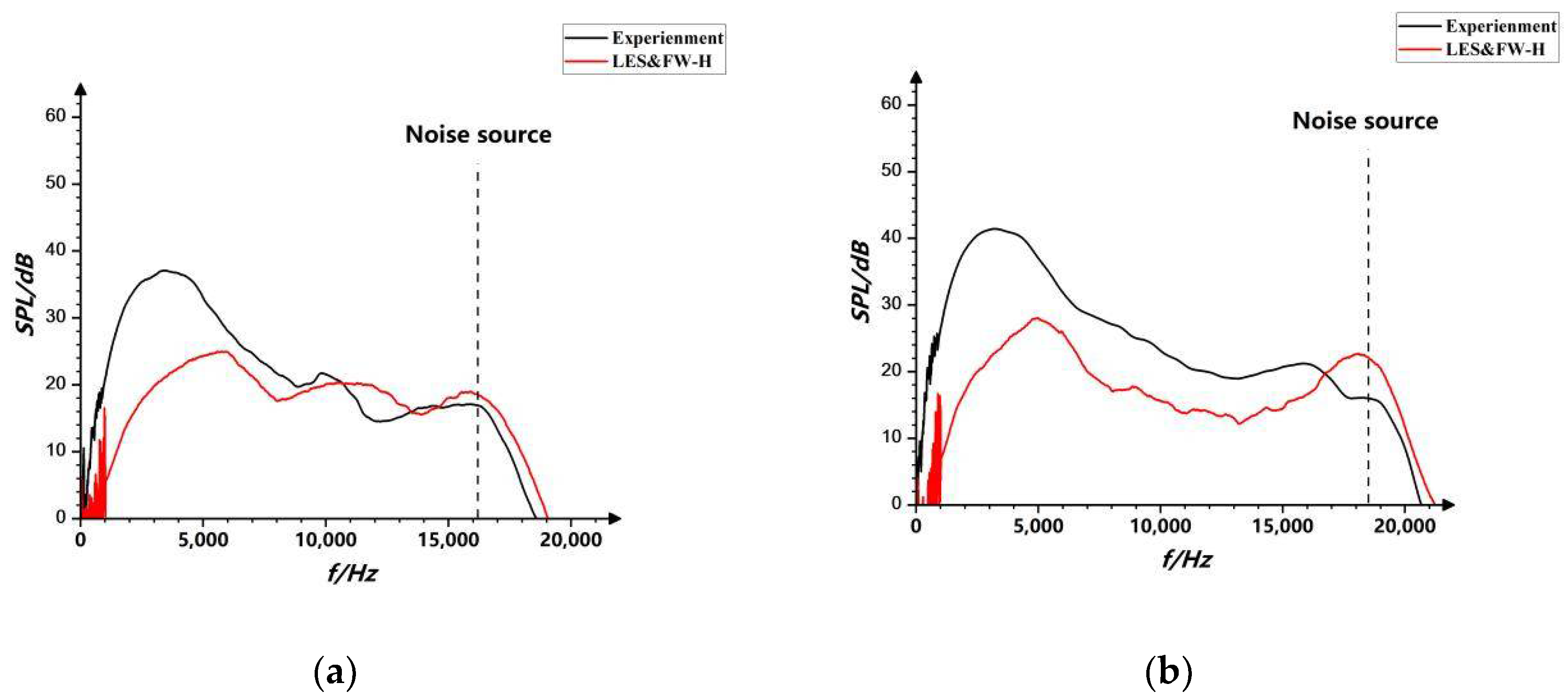

Publisher’s Note: MDPI stays neutral with regard to jurisdictional claims in published maps and institutional affiliations. |
© 2022 by the authors. Licensee MDPI, Basel, Switzerland. This article is an open access article distributed under the terms and conditions of the Creative Commons Attribution (CC BY) license (https://creativecommons.org/licenses/by/4.0/).
Share and Cite
Li, Z.; Li, J. Numerical Simulation Study of Aerodynamic Noise in High-Rise Buildings. Appl. Sci. 2022, 12, 9446. https://doi.org/10.3390/app12199446
Li Z, Li J. Numerical Simulation Study of Aerodynamic Noise in High-Rise Buildings. Applied Sciences. 2022; 12(19):9446. https://doi.org/10.3390/app12199446
Chicago/Turabian StyleLi, Zhengnong, and Jianan Li. 2022. "Numerical Simulation Study of Aerodynamic Noise in High-Rise Buildings" Applied Sciences 12, no. 19: 9446. https://doi.org/10.3390/app12199446
APA StyleLi, Z., & Li, J. (2022). Numerical Simulation Study of Aerodynamic Noise in High-Rise Buildings. Applied Sciences, 12(19), 9446. https://doi.org/10.3390/app12199446




